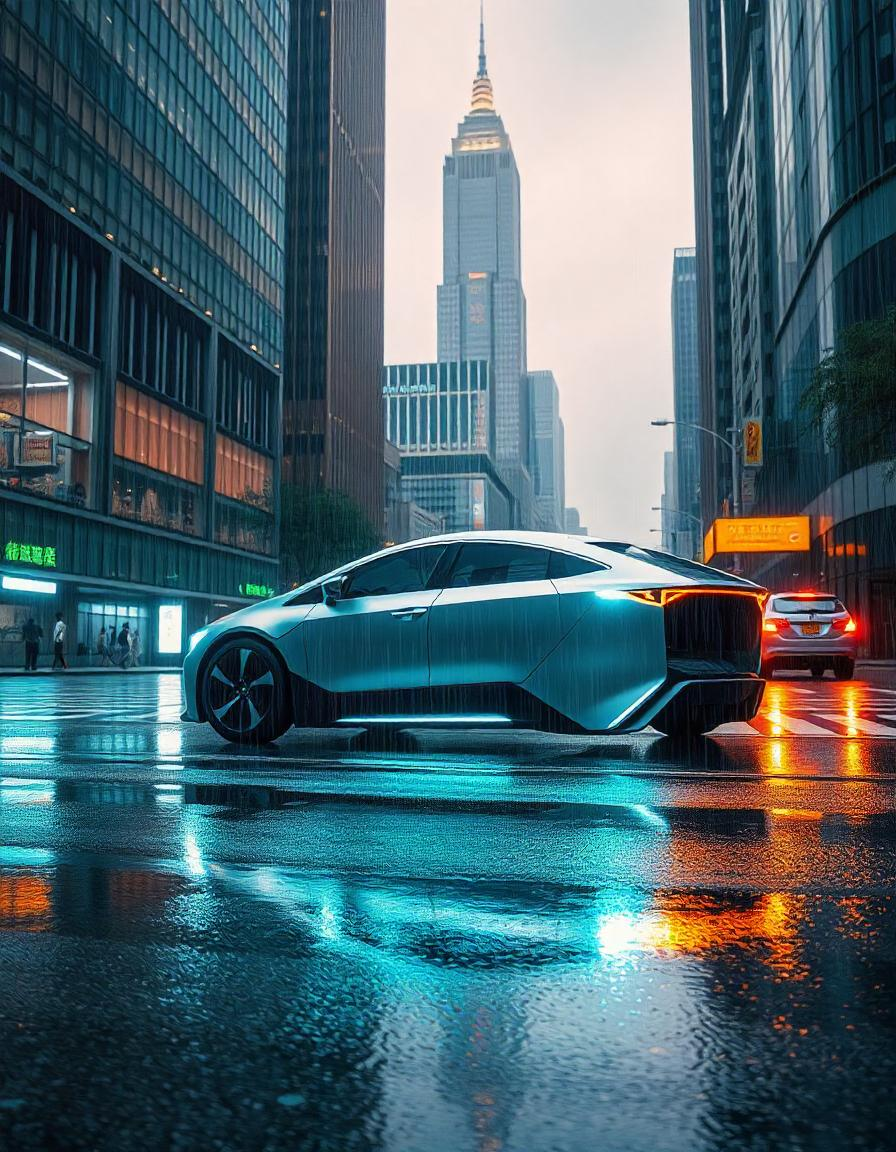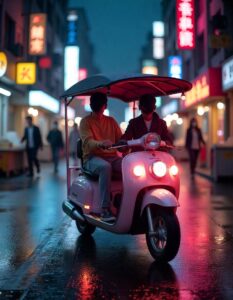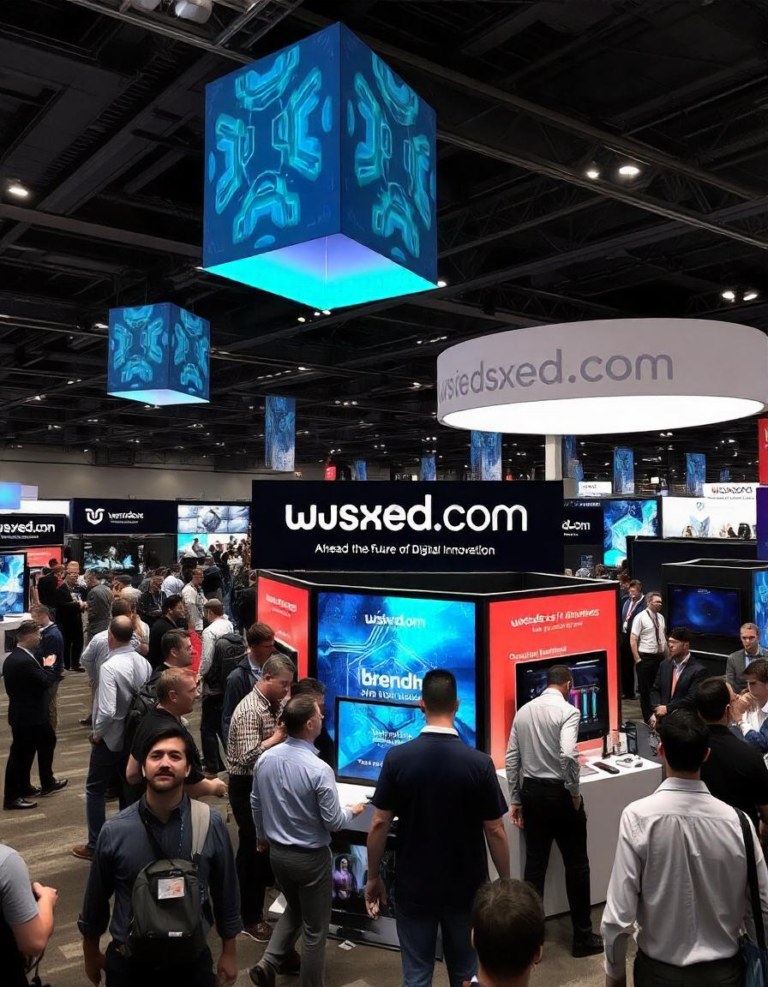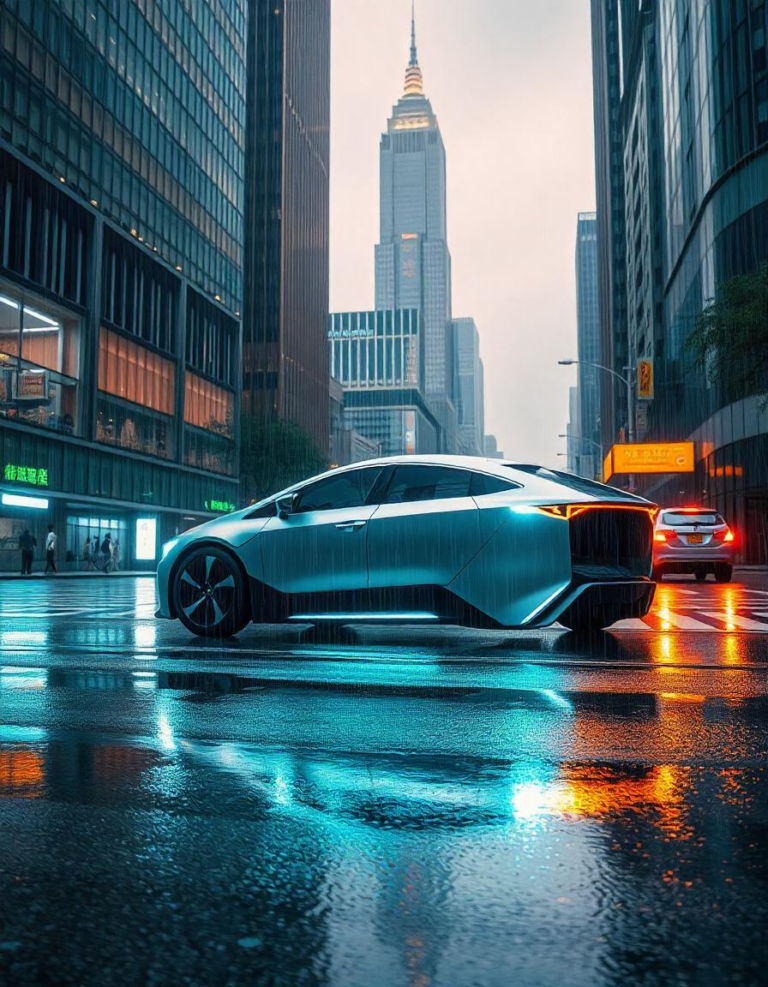
In the core of Taipei, a transportation upheaval is unfurling — one that fits the city’s rich social legacy with state of the art independent innovation. The Taipei self-driving gharry, a reconsidered rendition of the customary pony drawn carriage, has arisen as an image of shrewd, reasonable metropolitan versatility. Joining sentimentality with present day development, these independent vehicles are reshaping how inhabitants and travelers explore the city, offering a brief look into the fate of transportation while saving Taipei’s verifiable character.
The Concept: Where History Meets Technology:
The expression “gharry” begins from horse-drawn carriages that once navigated Taipei’s roads, epitomizing the city’s authentic appeal. Today, oneself driving gharry holds this exemplary stylish — wooden accents, rich seating, and fancy plans — yet replaces ponies with electric impetus and human drivers with man-made brainpower (computer based intelligence). Outfitted with LiDAR, radar, cameras, and GPS, these vehicles independently explore Taipei’s clamoring roads, staying away from impediments and enhancing courses continuously.
This combination of custom and innovation lines up with Taipei’s shrewd city drives, which plan to coordinate manageability, proficiency, and social safeguarding. By 2025, the city intends to extend its armada to north of 1,000 self-driving gharries, associating social milestones like Taipei 101, Chiang Kai-shek Commemoration Lobby, and Shilling Night Market.
Environmental and Social Benefits:
The self-driving gharry addresses critical urban challenges:
Manageability: Completely electric and discharge free, these vehicles diminish Taipei’s carbon impression and clamor contamination. Their advanced directing limits energy squander, adding to the city’s objective of carbon non partisanship.
Accessibility:Features like wheelchair ramps, braille instructions, and multilingual interfaces ensure exclusivity for elderly and disabled passengers, democratizing access to urban mobility.
Traffic Efficiency: Man-made intelligence driven coordination lessens blockage by synchronizing courses and limiting inactive time, facilitating tension on Taipei’s streets during top hours.
For travelers, the gharry offers more than transportation — it’s a vivid encounter. Increased reality (AR) shows give authentic setting as travelers float past milestones, mixing training with investigation.
Technological Backbone and Safety:
At the center of oneself driving gharry lies a complex organization of sensors and computer based intelligence calculations. LiDAR establishes 3D guides of the climate, while AI empowers constant direction, for example, changing rate during unexpected passerby intersections or rerouting to keep away from mishaps. Excess well being frameworks, including crisis slowing down and impact evasion, guarantee traveler security.
The vehicles additionally speak with smart infrastructure, for example, traffic signals and street sensors, to improve coordination. For example, a gharry moving toward a red light can prudently dial back, decreasing sudden stops and further developing energy proficiency.
Challenges and Solutions:
Despite its promise, the initiative faces hurdles:
Regulatory Frameworks:Regulations administering obligation and protection for independent vehicles stay a work in progress. Taipei is teaming up with policymakers to lay out clear rules.
Public Trust:Incredulity about simulated intelligence well being endures. To address this, the city sent off open demo rides and straightforwardness crusades featuring well being records.
Infrastructure Costs:etrofitting streets with sensors and charging stations requires huge speculation. Organizations with tech firms like TSMC (a forerunner in semiconductor producing) have sped up progress.

Future Prospects:
Taipei’s vision reaches out past transportation. Plans incorporate coordinating gharries with public travel organizations, permitting travelers to book multi-modular excursions by means of a solitary application. Future updates might consolidate hydrogen power devices for longer ranges and AR-directed visits that portray Taipei’s set of experiences progressively.
Frequently Asked Questions (FAQs):Taipei Self-Driving Gharry: Bridging Tradition and Innovation in Urban Mobility:
Q1:What is the Taipei self-driving gharry, and how does it blend tradition with technology?
Ans :The Taipei self-driving gharry is an autonomous vehicle inspired by the traditional horse-drawn carriages (gharries) that once roamed Taipei’s streets. It retains the classic aesthetic of wooden accents and ornamental designs but replaces horses with electric propulsion and human drivers with AI technology. Equipped with LiDAR, radar, cameras, and GPS, these vehicles autonomously navigate the city, offering a seamless blend of historical charm and modern innovation.
Q2: What are the environmental and social benefits of the self-driving gharry?
Ans : The self-driving gharry provides several benefits:
- Environmental: It is fully electric and emission-free, reducing Taipei’s carbon footprint and noise pollution.
- Social: It enhances accessibility with features like wheelchair ramps, braille instructions, and multilingual interfaces, making it inclusive for elderly and disabled passengers.
- Traffic Efficiency: AI-driven coordination optimizes routes, reducing congestion and improving traffic flow during peak hours.
Q3: How does the technology behind the self-driving gharry ensure safety and efficiency?
Ans: The self-driving gharry relies on advanced technology, including LiDAR for 3D mapping, AI algorithms for real-time decision-making, and redundant safety systems like emergency braking and collision avoidance. It also communicates with smart infrastructure, such as traffic lights and road sensors, to enhance coordination and efficiency. These features ensure safe, smooth, and energy-efficient navigation through Taipei’s streets.
Q4:What challenges does the Taipei self-driving gharry initiative face, and how are they being addressed?
Ans: The initiative faces several challenges:
- Regulatory Frameworks: Laws governing liability and insurance for autonomous vehicles are still under development. Taipei is working with policymakers to establish clear guidelines.
- Public Trust: Skepticism about AI safety is being addressed through public demo rides and transparency campaigns.
- Infrastructure Costs: Retrofitting roads with sensors and charging stations requires significant investment. Partnerships with tech firms like TSMC are helping to accelerate progress.
Q5:What are the future prospects for the Taipei self-driving gharry?
Ans: The future of the self-driving gharry includes integration with public transit networks, allowing passengers to book multi-modal journeys via a single app. Upgrades may incorporate hydrogen fuel cells for longer ranges and AR-guided tours that narrate Taipei’s history in real time. The project also fosters economic growth by creating jobs in AI development, vehicle maintenance, and cybersecurity, ensuring its long-term sustainability and impact.
Conclusion:
The Taipei self-driving gharry is in excess of a mechanical wonder; it’s a demonstration of the city’s capacity to respect its past while embracing what’s to come. By focusing on maintainability, exclusivity, and development, Taipei sets a worldwide benchmark for smart metropolitan versatility. As these independent carriages become a staple of city life, they offer an outline for different cities trying to offset progress with social protection. In a world wrestling with environmental change and urbanization, oneself driving gharry remains as a signal of what’s conceivable when custom and innovation ride connected at the hip.Also read about Robotics: From Industrial Applications to Everyday Life




